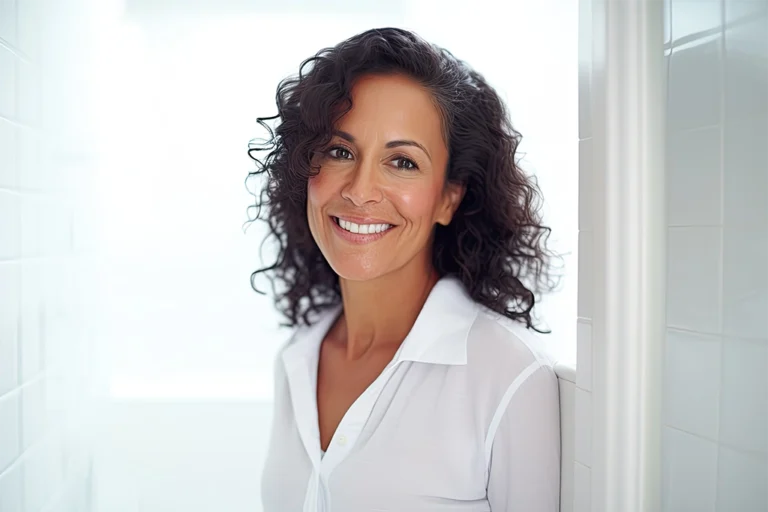We know that screening mammograms help your healthcare provider detect potential problems early, but in some cases, your results might not be clear-cut. If your mammogram results come back as unclear or suspicious, you might feel confused or even worried, and may not know what to do next.
Know that a lot of healthy people have received mammogram results like yours. Unclear results and suspicious results don’t necessarily mean that you have a disease like breast cancer, but it does mean your provider will want to know more about your breast health.
Let’s take a closer look at exactly what suspicious or unclear mammogram results could mean for your health, how your radiologist interprets your results, what your next steps could be, and where you can find support.
What does a clear mammogram result mean?
A clear mammogram result means the images obtained during your procedure indicate your breast tissue is normal, with no signs of any anomalies. These results indicate no breast abnormalities or signs that would raise any concern for potential breast cancer. However, as reassuring as clear results can be, it’s crucial to continue with annual breast screenings because changes in your breast tissue can occur over time.
What does it mean if my mammogram results are unclear?
An unclear result can be unsettling, but remember, it’s not an automatic cause for alarm.
Unclear simply means the images obtained didn’t give a clear enough picture for your healthcare provider to make a definitive interpretation. This could be due to various reasons, such as the overlapping of breast tissues or hormonal changes at the time of the scan. If your results are unclear, your doctor will discuss the next steps with you, which could include a diagnostic mammogram, breast ultrasound, or breast MRI.
Why did my mammogram results come back as suspicious?
Having your mammogram results come back as suspicious can certainly raise your anxiety levels, but it’s important to remember that suspicious results don’t necessarily mean cancer.
A suspicious result means that there’s an area in your breast that looks different from the norm, which could potentially be a sign of a benign condition, or less commonly it may be a sign of breast cancer. Suspicious results will require further tests to figure out exactly what is going on. You may need to undergo further studies, such as a biopsy, to provide more information for a clear diagnosis.

Your mammogram results
It’s perfectly normal to have questions or to feel nervous about your mammogram results, especially if they come back as suspicious or unclear.
Let’s look at how a breast imaging radiologist reads your mammogram results, and at what steps you might need to take next.
What specific details is a radiologist examining in my mammogram?
A radiologist is highly trained in certain areas of the body, allowing them to spot subtle differences and irregularities. These could include calcifications (small calcium deposits), cysts (fluid-filled sacs), or masses (areas of abnormal density).
The radiologist will also look at the symmetry between your breasts, and changes in size or shape from your previous mammograms, if your results are available. Your radiologist will closely examine the texture and density of your breast tissue. Dense breasts may be harder to assess, as dense breast tissue can sometimes mask potential issues. If you have dense breast tissue, you might require additional imaging, like a breast ultrasound or a breast MRI.
How does a radiologist differentiate between a normal and suspicious finding?
When your radiologist looks at your mammogram results, they’re looking for any signs typical of calcifications, cysts, and masses. Your radiologist is trained to identify anything suspicious, and will refer any suspicious or unclear findings to your healthcare provider, for further evaluation. Please keep in mind that not all suspicious findings are cause for concern––but they’re worth a closer look. For example, breast calcifications, lumps, and cysts can be very common, especially as you get older. These conditions could be caused by aging, or even previous injuries, and may not necessarily indicate breast cancer.
View our available mammography appointments at a location near you today
Follow-up studies after your mammogram
If you’ve never had unclear or suspicious mammogram results, then you might not understand what happens after you get your results back.
We’ll show you what kind of additional studies you may encounter, what steps you might need to take next, and how these studies will aid in providing a clearer picture of your breast health.
What kind of additional scans should I prepare for if my mammogram results are unclear?
Your radiologist will work with your doctor to determine what additional studies should be recommended. These may include diagnostic mammograms, which are similar to your initial screening mammogram but concentrate on the specific area of concern. A diagnostic mammogram often includes additional views or images from different angles, aiming to offer a more comprehensive look at the area in question.
Breast ultrasound is a commonly used follow-up study. This imaging technique uses sound waves to create images of the inside of your body and can be very effective in distinguishing between solid masses and fluid-filled cysts. Your provider may also recommend a breast MRI scan, which uses a magnetic field and radio waves to create detailed images of the inside of your breasts. An MRI is often used when the other images are still inconclusive or in women who are at high risk for breast cancer.
What will the next steps look like if my results are suspicious?
When results come back as suspicious, it means there’s something on the mammogram that requires further evaluation. This does not necessarily mean you have breast cancer. In fact, most suspicious findings are not cancer.
Additional imaging, like a diagnostic mammogram, ultrasound, or MRI, will be the first step. If these images still show a suspicious finding, your healthcare provider might recommend a biopsy. A breast biopsy is a procedure in which a small sample of tissue is removed from the suspicious area, and examined under a microscope. This is the most definitive way to determine if a suspicious finding is cancerous or not.
How are these additional studies different from my initial mammogram?
Your initial screening mammogram is like a broad overview, aimed at looking for any signs of concern in both breasts. When findings are unclear or suspicious, your healthcare team will likely order follow-up studies.
A diagnostic mammogram and an ultrasound provide a more detailed look at the specific areas of concern identified in the initial, screening mammogram. They can give more information about the size, shape, and composition of any masses or calcifications. An MRI, on the other hand, can provide a highly detailed look at your breast tissue and is particularly useful in certain circumstances, such as dense breast tissue or high-risk factors.
How will these studies help bring clarity to my mammogram findings?
While a screening mammogram is a great tool for detecting any potential issues, the images can sometimes be hard to interpret. This is where the additional studies come in. Follow-up studies will give your provider a more in-depth look at your health, helping to distinguish between a benign tumor (which is non-cancerous) and a potentially malignant tumor. Don’t forget: unclear or suspicious mammogram results don’t automatically mean something is wrong. Speak with your doctor to be sure.

Finding support for your breast health
There are plenty of excellent resources available to support your breast health and emotional wellness, not just online, but also in South Jersey and Greater Philadelphia. Here are some ideas for resources where you can find the support you need.
What resources in the South Jersey and Philadelphia area can I turn to for support?
Our area has many resources available for emotional support, whether you need a support group or individual counseling, online or in person.
- Gilda’s Club South Jersey provides support groups, individual counseling, and workshops for people facing cancer, both online and at locations in South Jersey
- The New Jersey Breast Cancer Coalition offers support, personal advocacy, and educational tools for women diagnosed with breast cancer
- The Cancer Support Community of Greater Philadelphia provides support groups, workshops, and educational sessions for those facing cancer
- CancerCare offers cost-free counseling services from licensed oncology social workers, not only online, but also in individual and group settings
Remember, these resources are here to support people in your situation, so please don’t hesitate to reach out and take advantage of any services they offer.
What are some good online resources for support?
There are several well-established online resources available to support people living with cancer. If you need to speak with someone, or if you want to know more about your diagnosis, here are some good places to get started.
Websites such as Breastcancer.org provide not only educational materials but also support forums where you can connect with others who are going through the same experiences.
The American Cancer Society also offers a variety of online resources, including support communities and hotlines, which are available 24/7. Their Reach To Recovery program connects people with trained volunteers who have gone through similar experiences. For a comprehensive collection of resources, the National Breast Cancer Foundation offers online guides, educational material, and connections to support groups.
How to schedule an appointment with us
Our goal is to offer you and your healthcare provider the most informative results possible, and we make it easy for you to get an appointment.
With numerous locations across South Jersey, you’ll find us conveniently located near major highways and key bridges in the region.
We’ll ensure the entire scheduling process is as effortless as possible for you. Above all, we are here to help you.
Reach out to us at any of the following locations to book an appointment:
- Cherry Hill Office – Cherry Hill, NJ
- Haddonfield Office – Haddonfield, NJ
- Marlton (Greentree) Office – Marlton, NJ
- Moorestown Office – Moorestown, NJ
- Turnersville Office – Turnersville, NJ
- West Deptford Office – West Deptford, NJ
- Willingboro Office – Willingboro, NJ
- Women’s Center at Cross Keys – Sewell, NJ
- Women’s Center at Medford – Medford, NJ
- Women’s Center at Mount Laurel – Mount Laurel, NJ
- Women’s Center at Voorhees – Voorhees Township, NJ
Learn more about the board-certified, subspecialized radiologists who read, analyze and interpret the findings here at South Jersey Radiology Associates.
Frequently Asked Questions
Unclear mammogram results mean that the images taken during the mammogram are not distinct enough, or have areas that are ambiguous, and require further imaging tests to provide a clearer view.
Suspicious mammogram results suggest there might be an abnormal area that needs further investigation. However, this does not mean a definitive diagnosis of cancer, as many suspicious results turn out to be benign after additional testing.
A radiology technologist’s primary role is to capture the mammogram images, while the interpretation of these images for any suspicious or unclear areas is performed by a radiologist.
In the event of unclear mammogram results, additional imaging tests such as an ultrasound or MRI are usually required to gather more details about the concerning area.
If your mammogram results are suspicious, your next steps will likely involve further diagnostic testing, such as a biopsy, to investigate the suspicious area more closely.
The key to coping with such anxiety is understanding that unclear or suspicious results do not automatically mean a cancer diagnosis and seeking support from friends, family, or support groups can be highly beneficial.
Understanding your mammogram results involves clear communication with your healthcare team, learning about the different possibilities, and knowing what questions to ask about next steps.
Follow-up testing after a mammogram typically includes more specialized imaging tests, and possibly a biopsy, to provide a clearer picture of the suspicious or unclear area.



